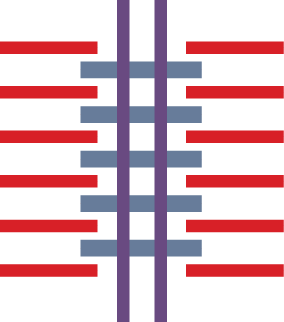The human heart beats upwards of 100,000 times a day, and contractile forces place unique physical and regulatory demands on the protein complexes that join cardiomyocytes together to form a functional heart muscle. Mechanical coupling and chemical communication between cardiomyocytes are accomplished through a specialized adhesive structure called the intercalated disc (ICD). The ICD comprises adherens junctions and desmosomes that connect the actin and intermediate filament cytoskeletons, respectively, to the plasma membrane. ICD formation requires multiple adhesion and cytoskeletal proteins, and mutations in these proteins can cause cardiomyopathies. Yet we know little about how the actin and intermediate filament cytoskeletons are linked to the intercalated disc, the function of junctional complexes within the intercalated disc or how these adhesive structures resist the mechanical forces of contraction to preserve tissue integrity. Determining how protein complexes function at the ICD to maintain adhesive homeostasis is critical for understanding heart function and disease.
The core of the adherens junction is the cadherin-catenin complex, which is connected to the actin cytoskeleton through a-catenin. a-Catenin is multifunctional actin-binding protein that localizes to the ICD in cardiomyocytes, and loss of a-catenin function in mice causes cardiomyopathy. However, a-catenin functions in cell-cell adhesion in cardiomyocytes are poorly understood. We hypothesize that a-catenin regulates cardiomyocyte cell-cell adhesion by coupling actin and intermediate filaments to ICD junctional complexes.
The primary objective of research in the Kwiatkowski Lab is to identify the mechanistic role of the cadherin-catenin complex in cardiomyocyte adhesion. Current research projects aim to:
1) Define the actomyosin linkage to the adherens junction in cardiomyocytes.
2) Identify a-catenin functions required for cardiomyocyte adhesion
3) Determine a-catenin/plakophilin functions in the organization and integration of actin and intermediate filaments at the ICD
The molecular mechanisms that underlie cytoskeletal organization and integration at the intercalated disc are largely unknown. Our work seeks to develop new tools and acquire new knowledge about the mechanisms of cell-cell adhesion in cardiomyocytes, which in turn will provide a molecular foundation for assessing the impact of mutations in ICD proteins on cardiac pathophysiology and inform the development of new strategies for the treatment of cardiomyopathies.
